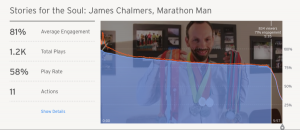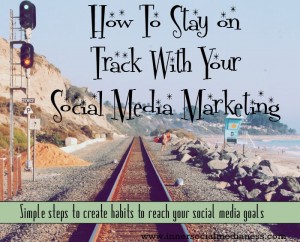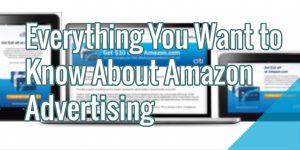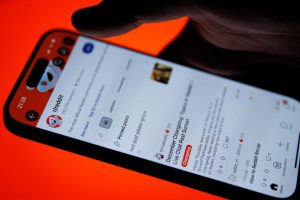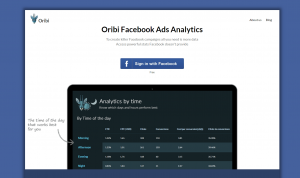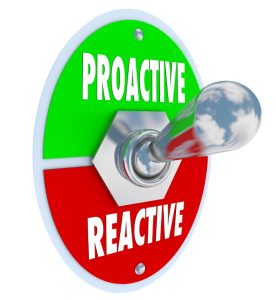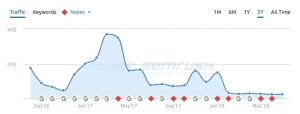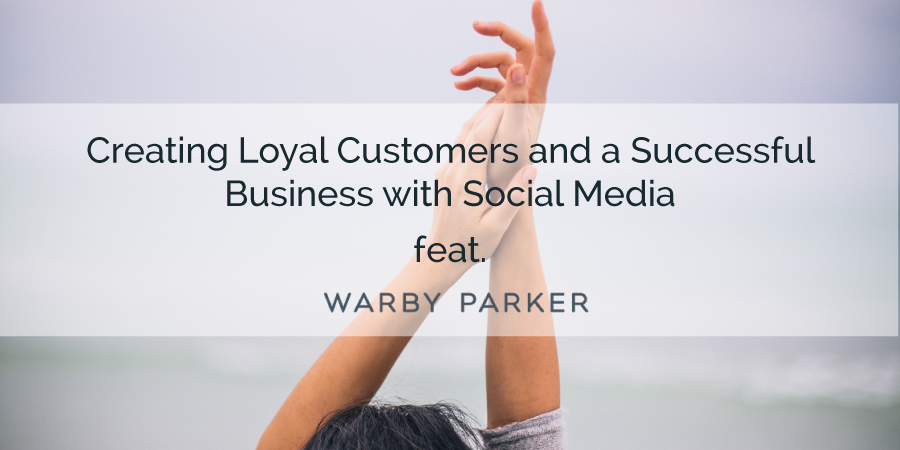
Just five years ago, would anyone have believed that it would be possible — and smart! — to buy something as personal and vital to your everyday wellbeing as eyeglasses completely online?
The origin story of Warby Parker and how they defied conventional wisdom is well documented. They are a great case study of a startup disrupting an industry, and becoming a real player with revolutionary technology and a modern business plan.
But what’s interesting to me, is how they built their brand and created loyal customers through the power of earned social. Earned social is the most trusted form of marketing and the greatest driver of action — after all, it’s just digital word-of-mouth recommendations. In the middle of 2014, they surpassed the 1 million pairs of glasses sold mark. Earned social marketing converts.
So…How do they do generate so much earned social?
Social Good
They started with a social purpose. By making ‘buy one, give one’ a core part of the business, they instantly made themselves very attractive to Millennials and their younger counterparts, Gen Z. These two generations are perhaps the most socially and globally conscious generations. Just look at this year’s Super Bowl commercials. Other than dogs and dads, one of the big themes this year was highlighting how the brand is making the world a better place.
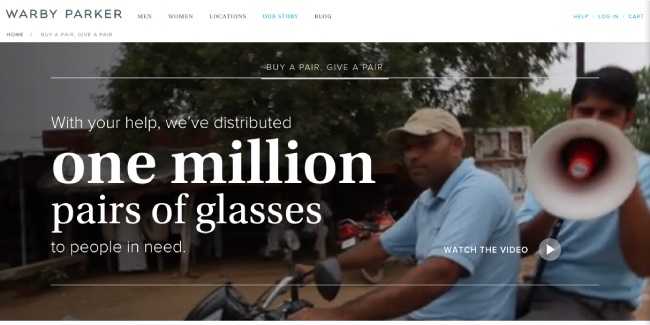
Warby Parker’s social good makes the brand very shareable for Facebook users who want to project a socially-conscious lifestyle, while still participating in a consumer-centric society.
A Clear Culture
Everything that comes out of Warby Parker has the same vibe. It oozes brainy-cool. They know what they stand for, and if consumers stand for the same thing, it’s incredibly attractive.
When you’re part of a culture, you’re proud of it — you want to share it. You want to wear it as a badge and let people know. And social media is the perfect place to showcase that badge.
As a consumer, if you want to prove that you’re a part of this road-less-traveled, literature-loving culture, you wear Warby glasses.
Delightful Content
They write amazing blog content that’s tailor-made for social media. They understand that content doesn’t have to directly relate to product, especially for something as lifestyle as fashionable glasses. Think about it like this: if a brand has great taste in literature, music, food, design, and decor, do you think they have good taste in glasses? You bet they do. So the once-a-year or once-every-two-years when you’re shopping for glasses, you’ll think of the cool brand. The brand that understands you.

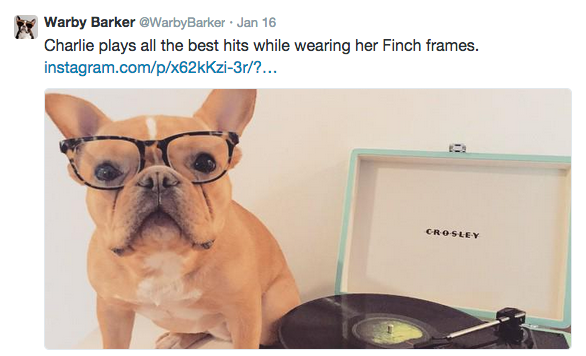
The medium of their content also shows that they get their target audience. Their website practically reads like an infographic. It’s fun, concise, and just quirky enough. That’s a recipe to get shared on social media.
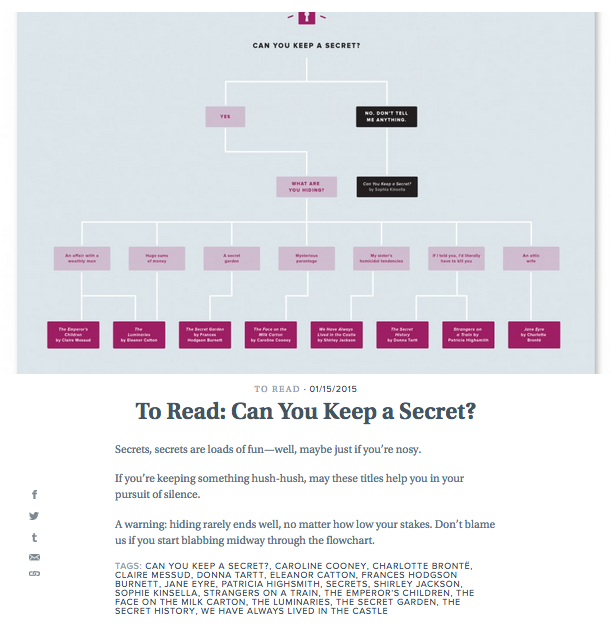
Somehow, they even make their annual reports fun and shareable!
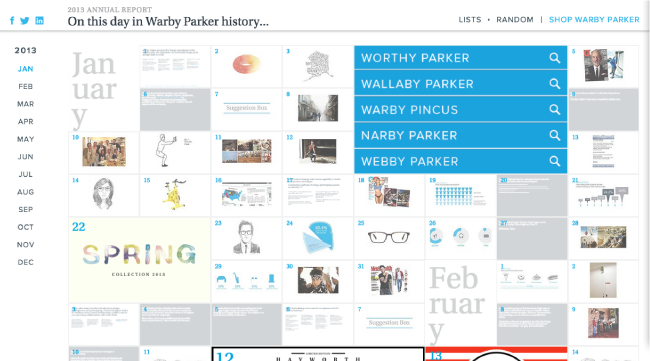
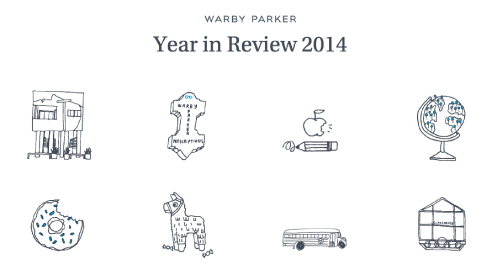

Shareable Experiences
“Tell me and I forget, teach me and I may remember, involve me and I learn.” – Benjamin Franklin
The keys to social success aren’t limited to what happens on social pages. Giving your customers great experiences plays a huge role in encouraging organic social sharing. Experiencing something — compared to just reading or watching something, as the Benjamin Franklin quote alludes, creates a much deeper and more meaningful connection, which is hugely vital in a brand’s ability to earn social sharing.
Back in 2012, Warby Parker started doing the “Class Trip”, taking their showroom on the road, in a beautifully designed yellow schoolbus. They partnered with trendy brands and local favorites to create a wonderful environment, where guests have a great, one-of-a-kind experience.
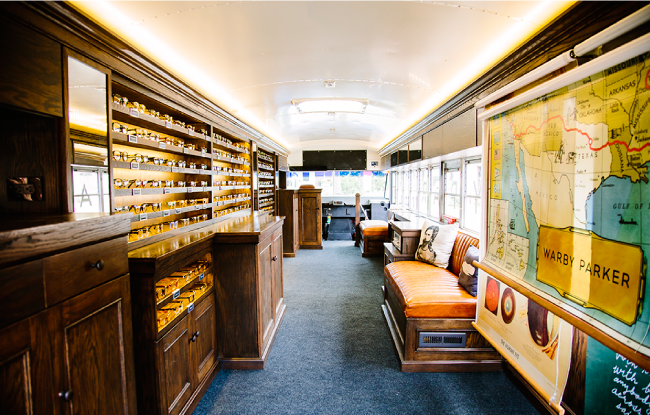
Even their brick and mortar stores feel like they are straight out of a Wes Anderson film. A literature lovers dream come true.
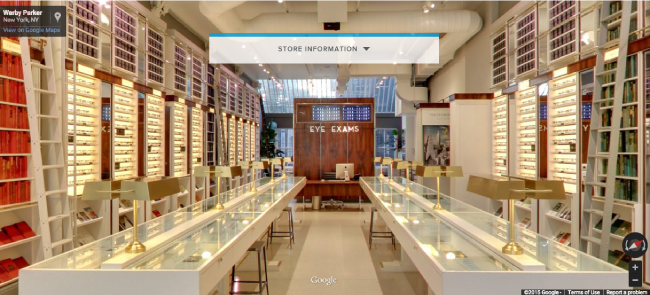
And for Millennials, these experiences are great because they make for great stories to share on social media. In an age of FOMO and social currency, pop-up experiences with cool, hip brands are the pinnacle. They’re exclusive, temporal, and scream “insider”, if you get to experience it.
Try-On Experience
Shopping for glasses is a hugely personal experience. Because they sit right on your face, it’s important for people to be able to try them on, make sure they’re comfortable, and make sure they are, well, you.
Now because they are primarily ecommerce (they’ve slowly introduced showrooms in select cities), ensuring the glasses are the right ones are a major hurdle. So Warby summoned the power of technology and social media to ease the try-on problem.
If you don’t live near one of their 18 showrooms, there are two options to “try” the glasses. The first option is the virtual mirror. You upload a headshot and adjust the size and angle of the glasses to fit your face. It’s a pretty nifty experience.
The genius of the virtual mirror is that they encourage you to share your mirror with your friends on Facebook and Twitter for feedback. But it’s not just about peer feedback, it’s free marketing for Warby. By sharing your virtual mirror, you’re 1) increasing Warby Parker awareness, and 2) educating your peers about the virtual try-on capability. That’s two big steps in the customer journey taken care of.
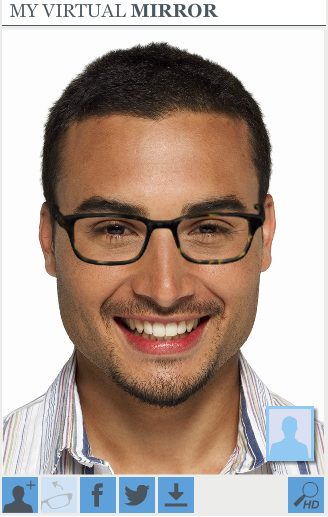
The other option is the home try-on, where you select five frames, and Warby Parker will send them right to your house. You then have five days to try them, show your family and friends, and then send them back. It’s all free, postage included. But, being the social media thinkers that they are, they encourage you, again, to share on your social channels, even offering expert feedback if you post your pictures to their Facebook page. For the consumers, it’s about getting feedback, but for Warby, it’s more free marketing. Genius.
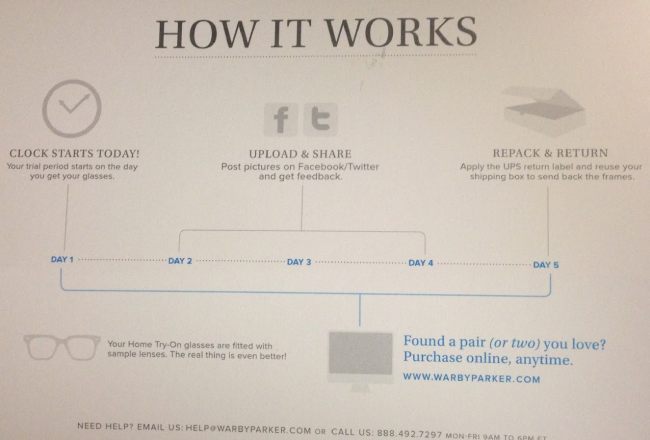
For Warby, social media is much more than getting likes and follows. When your marketing and business plan, depend on social marketing, it must deliver business results.
How much of their sales they attribute to social marketing, we’re not sure. But one thing is for certain: the powerful brand they built using social media and the vocal consumers they’ve converted, make for a ton of organic earned social sharing. At Inside Social, we’ve seen that earned social is the most powerful social influencer, and it makes for an incredibly efficient conversion-driving marketing machine.
(Image credit: Warby Parker, NYC Recessionista)
(266)
Report Post


